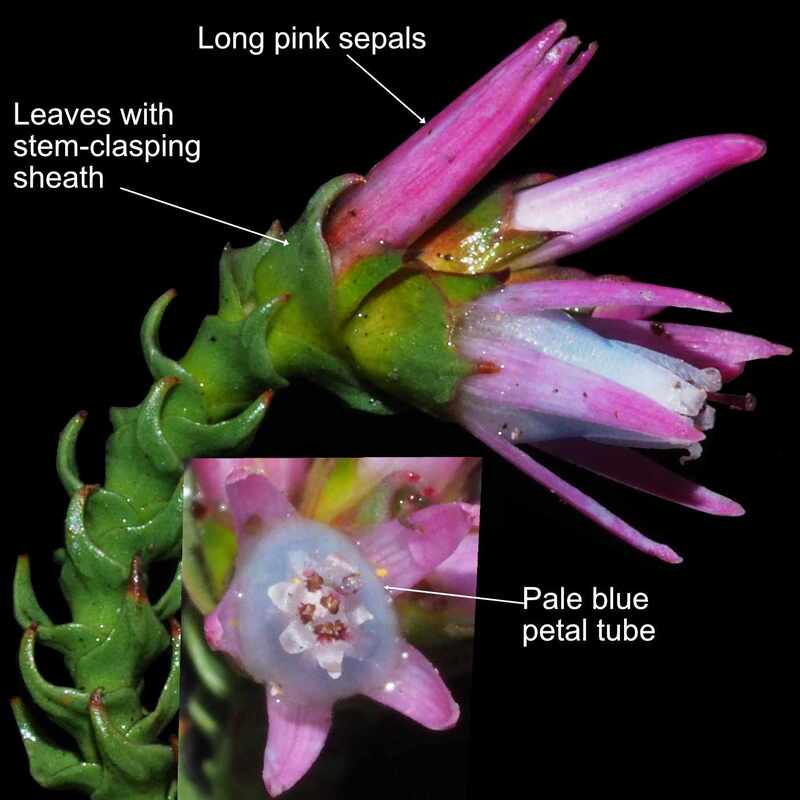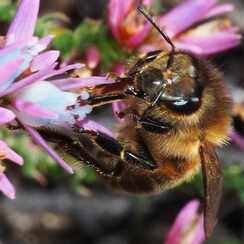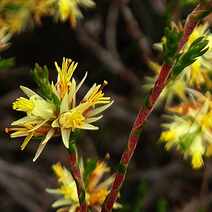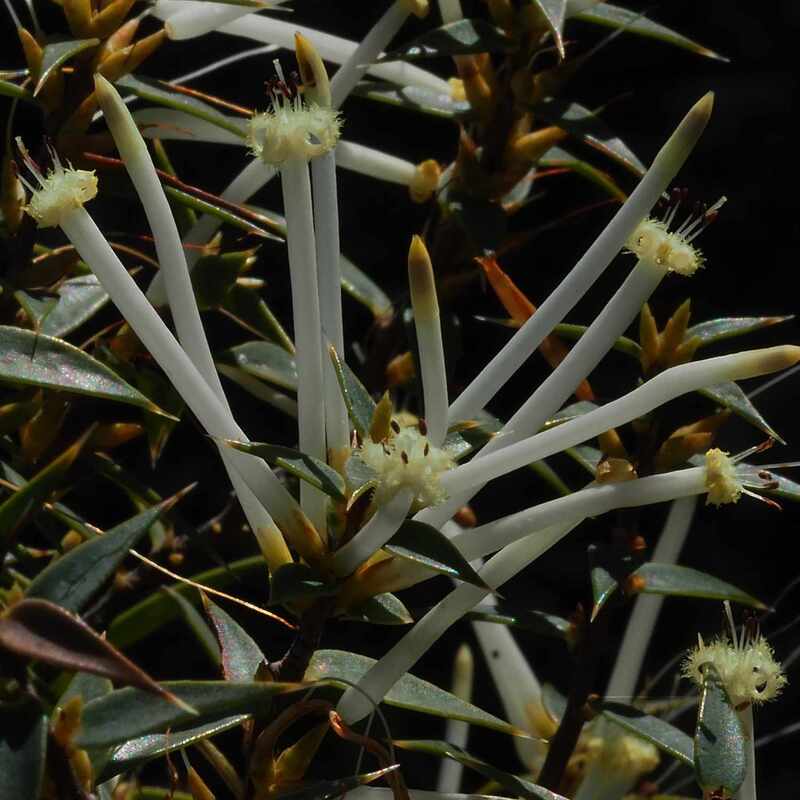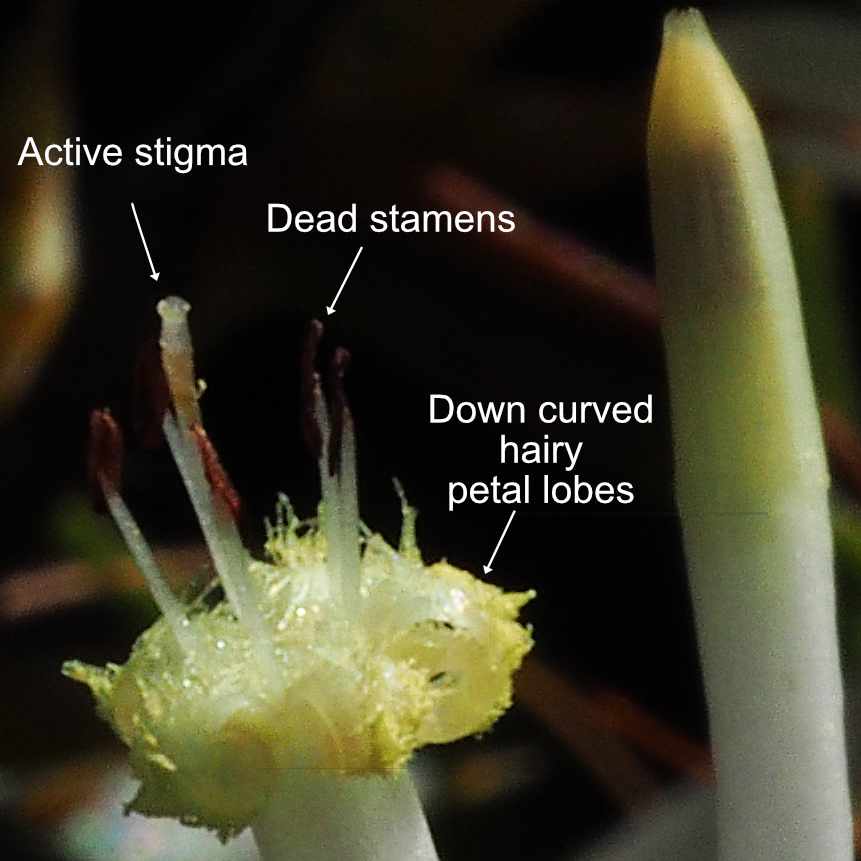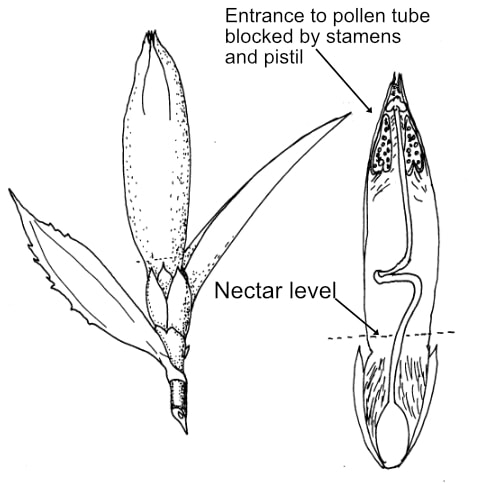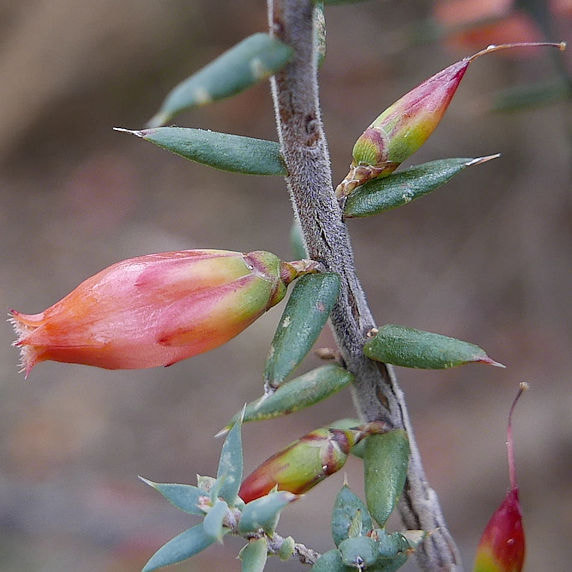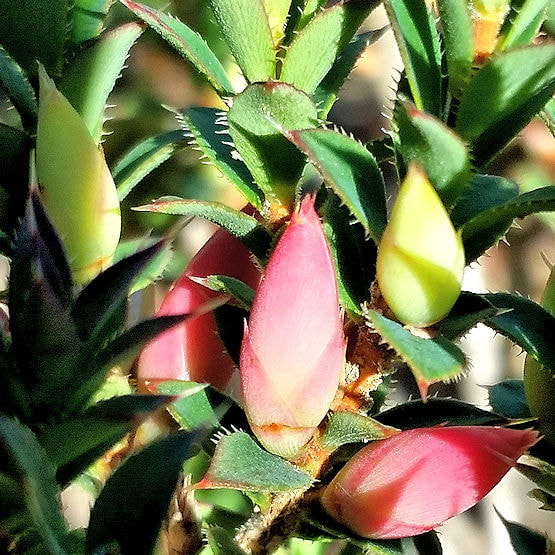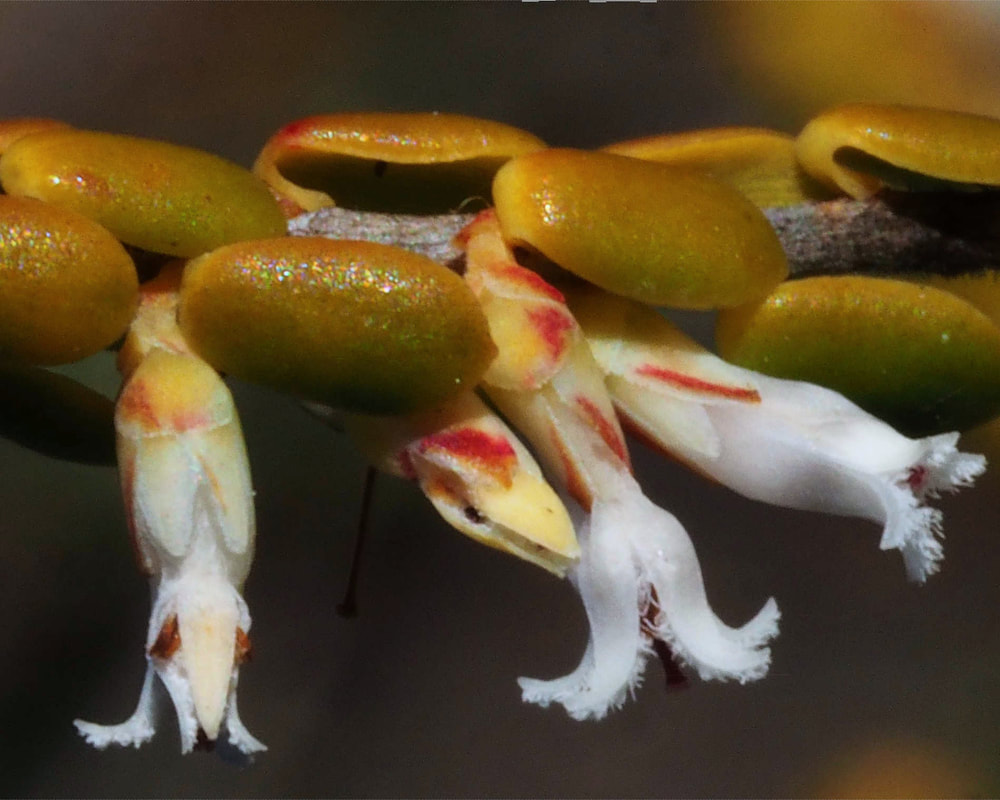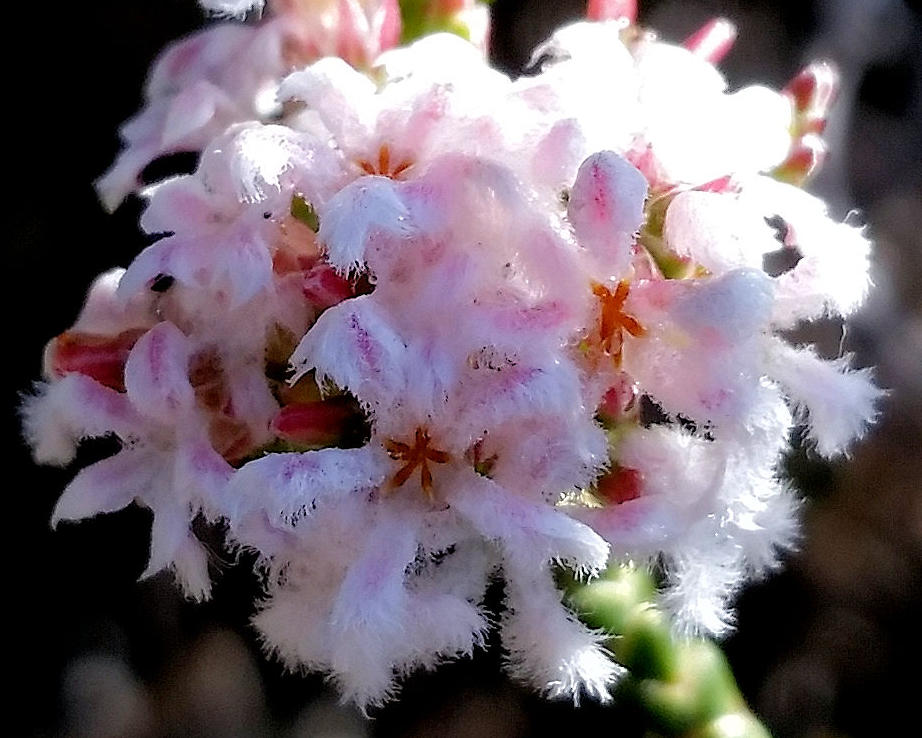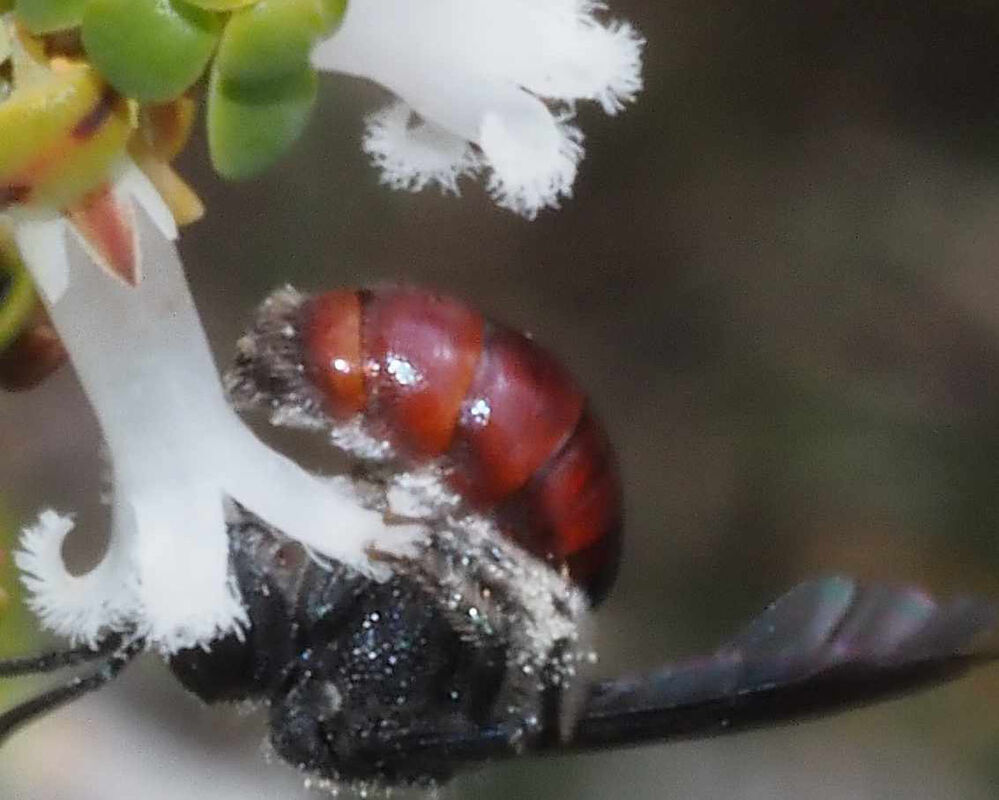Common features include.
- Prostrate or low shrubs, usually having short tough leaves with parallel leaf veins and a sharp tip.
- Flowers have free sepals surrounding petals, which are fused into a short or long tube ending in petal lobes that may be shorter or longer than the tube.
- Usually white or red/orange flowers with nectar. but may or may not have an aroma.
- Flowers often have tiny hairs or scales on upper petal surfaces on the lobes and/or inside the tube. Incidentally, these hinder non-pollinating insects such as ants from stealing nectar.
- Fruit are berries (drupes) or small capsules, which are eaten by animals. Emus are listed as major seed dispersers.
- Many of them flower early in the year from March onwards.
I can see the logic behind genetic grouping, and have a high regard for our Eastern States neighbours (despite them being a trifle strange).
However, it is rather sad for people like me with an flawed memory and even less patience to work my way through a tortuous key to identify plants with shared characteristics.
Here are a few examples.
- Colour. Insect vision is sensitive to ultraviolet and white light, but poor at the red end of the spectrum. Conversely, red stands out for birds and large animals, which are major pollinators)
- Sexual deception in orchids.
- Plants like Hibbertias and tomatoes lack nectar, but have dry loose pollen which attracts bees that use buzz pollination.
- Plants with nectar and very long petal tubes selectively attract moths and birds. Those with short or no tube are generalists which can be pollinated by many animals including flies.
- Mammal specific flowers are often large, hidden, dull-coloured, and strongly scented with lots of nectar.
.
At risk of being labelled a dinosaur, I list local Ericaceae genera below using the old classification so I can easily distinguish plant groups having shared characteristics in the bush. Some other amateurs may find it useful.
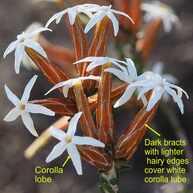 Lysinema pentapetalum. Curry Bush
Lysinema pentapetalum. Curry Bush Flowers of the most common species called Curry Bush have a curry powder smell, which attracts pollinating moths. Flowers have several distinctive brown bracts, which cover most of the white flower tube. Formerly classified as Lysinema ciliatum, it has been renamed Lysinema pentapetalum. The species are very similar, but rarely interbreed. Lysinema ciliatum flowers have a sweet smell, less flowers per group, lighter coloured bracts and are mainly further south. Further information.
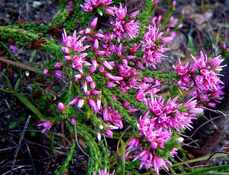
There is only species, Andersonia caerula - Foxtails and a few priority 2 species in Narrogin district. The stunning Foxtail flower has long pink sepals designed to attract birds and delicate pale blue petal tubes with a narrow entrance, which is packed with stamens and the pistil to keep unwanted insects out. Pollinators need a firm beak or tongue to get through to the nectar. Honeyeaters are listed as major pollinators, but bees were active when I visited them at Ylliminning Nature Reserve.
This hardy group has sepals shorter than, and which clasp a pollen tube with short hairy-interior lobes. I was surprised to learn that all local species are pollinated by Western Spinebills and honeyeaters. On reflection, it made sense because most flowers are red-orange and have tight narrow petal-tube entrances. All species have fleshy berries, which are dispersed by birds and bobtail skinks. Emus were particularly common eaters of flowers and berries. Alas no longer in our widely dispersed reserves. As many Astrolomas are fire-sensitive, a lack of emus to disperse seed could threaten their long term survival. They are generally very tough and long-lived, and have evolved to live in dry places.
There are five species in Foxes Lair.
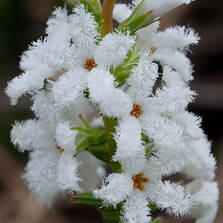
There are many species in Narrogin district reserves, which have similar looking flowers - small whitish flowers with long petal-tube lobes, usually with an abundance of fluffy hairs on upper side of the lobes. They are exquisite close-up. The short open petal tube provides nectar access for a range of flying insects (flies wasps butterflies and moths, gnats, birds), but bees are the main pollinators.
There are three species in Foxes Lair.
References
Keighery 1996 Phytogeography, Biology and Conservation of Western Australian Epacridaceae
De Gruyter Eight Pollination Syndromes

